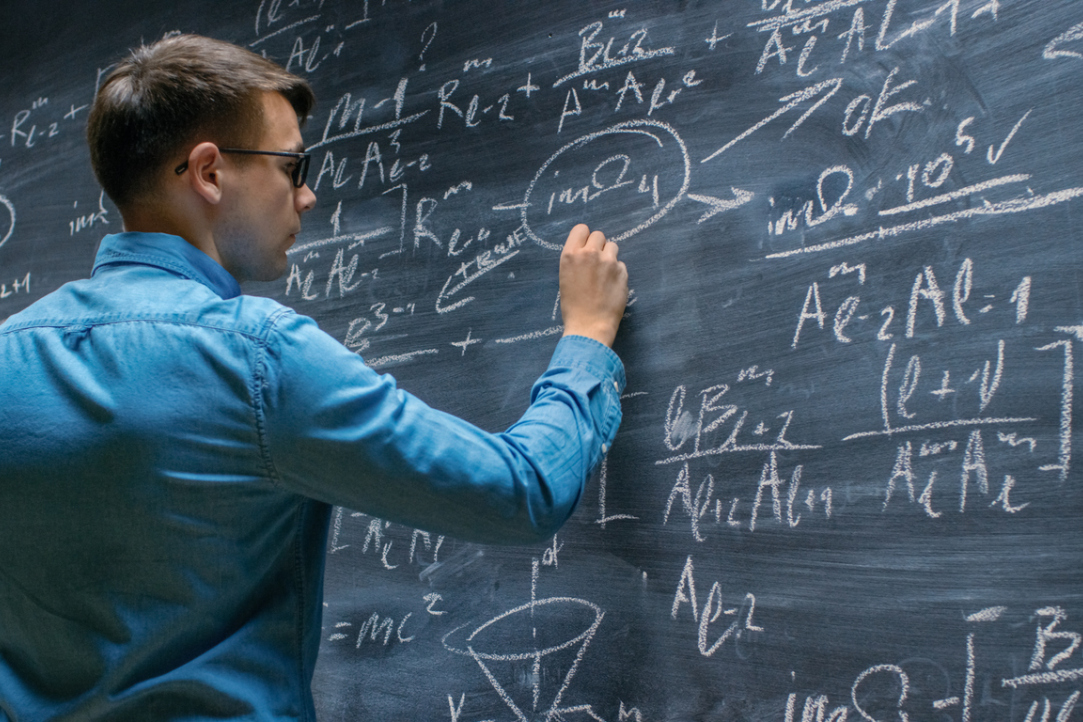Mathematicians from HSE University–Nizhny Novgorod Solve 57-Year-Old Problem

In 1968, American mathematician Paul Chernoff proposed a theorem that allows for the approximate calculation of operator semigroups, complex but useful mathematical constructions that describe how the states of multiparticle systems change over time. The method is based on a sequence of approximations—steps which make the result increasingly accurate. But until now it was unclear how quickly these steps lead to the result and what exactly influences this speed. This problem has been fully solved for the first time by mathematicians Oleg Galkin and Ivan Remizov from the Nizhny Novgorod campus of HSE University. Their work paves the way for more reliable calculations in various fields of science. The results were published in the Israel Journal of Mathematics (Q1).
Many mathematical and theoretical physics problems require precise calculations of complex specific values, such as how quickly a cup of coffee cools down, how heat spreads in an engine, or how a quantum particle behaves. Research into quantum computers and quantum information transmission channels, random processes, and many other areas important to modern science involve calculating semigroups of operators. Such calculations are based on the exponent, one of the most important mathematical functions expressed by the number e (approximately equal to 2.718) raised to a power.
However, in the case of very complex systems described by so-called unbounded operators, standard methods for calculating the exponent (semigroup of operators) stop working. In 1968, American mathematician Paul Chernoff proposed an elegant solution to this problem: a special mathematical approach now known as Chernoff approximations of semigroups of operators. This makes it possible to approximately calculate the required values of the exponent by consistently building more and more precise mathematical constructions.
Chernoff's method guaranteed that successive approximations would eventually lead to the correct answer, but did not show how quickly this would happen. Simply put, it was unclear how many steps were needed to achieve the desired accuracy. It was this uncertainty that prevented the method from being used in practice.
Mathematicians Oleg Galkin and Ivan Remizov from HSE University–Nizhny Novgorod solved this problem, which scientists around the world had struggled with for many decades. They managed to obtain general estimates of the convergence rate—that is, to describe how quickly the approximate values converge to the exact result depending on the selected parameters.

Ivan Remizov
‘This situation can be compared to a culinary recipe. Paul Chernoff indicated the necessary stages, but did not explain how exactly to select the optimal "ingredients"—auxiliary Chernoff functions that provide the best result. Therefore, it was impossible to accurately predict how quickly the “dish” would be ready. We have refined this recipe and determined which ingredients are best suited to make the method faster and more efficient,’ explains Ivan Remizov, senior researcher at the HSE International Laboratory of Dynamical Systems and Applications, senior researcher at the RAS Dobrushin Laboratory of the A.A. Kharkevich Institute for Information Transmission Problems, and co-author of the study.
Galkin and Remizov showed that Chernoff’s method can work much faster if the auxiliary Chernoff functions are chosen correctly. With the right selection of functions, the approximation becomes much more accurate even at the early stages of calculations. The mathematicians also proved a rigorous theorem: if the Chernoff function and the semigroup being approximated have the same Taylor polynomial of order k, and the Chernoff function deviates little from its Taylor polynomial, then the difference between the approximate and exact values decreases at least proportionally to 1/n^k, where n is the step number and k is any natural number reflecting the quality of the selected functions.

Oleg Galkin
Continuing the recipe analogy, the scientists have managed not only to clarify which ingredients work best, but also to accurately estimate how much faster the ‘dish’ is prepared if these optimal products are used. The formula derived by the mathematicians based on this analogy works like this: at each step of preparation, the result becomes more accurate, and the error decreases proportionally to one divided by n to the power of k, where n denotes the step number in the recipe, and k depends on the quality of the selected ingredients. The higher the value of k, the faster the desired result will be achieved.
Thus, Oleg Galkin and Ivan Remizov managed to solve a problem that had remained open for more than half a century. In addition to bringing clarity, their achievement could open up prospects and generate new problems to be solved. Although the study is theoretical in nature, its significance goes beyond pure mathematics. Such results often serve as the basis for developing new numerical methods in quantum mechanics, heat transfer, control theory, and other sciences where complex processes are modeled.
The theorem proposed by Oleg Galkin and Ivan Remizov was presented at the international scientific conference ‘Theory of Functions and Its Applications’ on July 5, 2025.
The work was supported by the HSE Fundamental Research Programme and the HSE International Laboratory of Dynamical Systems and Applications, grant No. 23-71-30008 of the Russian Science Foundation ‘Dissipative Dynamics of Infinite-Dimensional and Finite-Dimensional Systems, Development of Mathematical Models of Mechanical and Hydrodynamic Processes.’
See also:
Banking Crises Drive Biodiversity Loss
Economists from HSE University, MGIMO University, and Bocconi University have found that financial crises have a significant negative impact on biodiversity and the environment. This relationship appears to be bi-directional: as global biodiversity declines, the likelihood of new crises increases. The study examines the status of populations encompassing thousands of species worldwide over the past 50 years. The article has been published in Economics Letters, an international journal.
Scientists Discover That the Brain Responds to Others’ Actions as if They Were Its Own
When we watch someone move their finger, our brain doesn’t remain passive. Research conducted by scientists from HSE University and Lausanne University Hospital shows that observing movement activates the motor cortex as if we were performing the action ourselves—while simultaneously ‘silencing’ unnecessary muscles. The findings were published in Scientific Reports.
Russian Scientists Investigate Age-Related Differences in Brain Damage Volume Following Childhood Stroke
A team of Russian scientists and clinicians, including Sofya Kulikova from HSE University in Perm, compared the extent and characteristics of brain damage in children who experienced a stroke either within the first four weeks of life or before the age of two. The researchers found that the younger the child, the more extensive the brain damage—particularly in the frontal and parietal lobes, which are responsible for movement, language, and thinking. The study, published in Neuroscience and Behavioral Physiology, provides insights into how age can influence the nature and extent of brain lesions and lays the groundwork for developing personalised rehabilitation programmes for children who experience a stroke early in life.
Scientists Test Asymmetry Between Matter and Antimatter
An international team, including scientists from HSE University, has collected and analysed data from dozens of experiments on charm mixing—the process in which an unstable charm meson oscillates between its particle and antiparticle states. These oscillations were observed only four times per thousand decays, fully consistent with the predictions of the Standard Model. This indicates that no signs of new physics have yet been detected in these processes, and if unknown particles do exist, they are likely too heavy to be observed with current equipment. The paper has been published in Physical Review D.
HSE Scientists Reveal What Drives Public Trust in Science
Researchers at HSE ISSEK have analysed the level of trust in scientific knowledge in Russian society and the factors shaping attitudes and perceptions. It was found that trust in science depends more on everyday experience, social expectations, and the perceived promises of science than on objective knowledge. The article has been published in Universe of Russia.
Institute for Robotics Systems Established at HSE University
As decided by the HSE University Academic Council, a new Institute for Robotics Systems will be established at HSE, and with a strong fundamental base. It will cooperate with relevant departments across the university and engage students and doctoral candidates in research and development (R&D). First Vice Rector of HSE University and Director of the Institute for Statistical Studies and Economics of Knowledge, Leonid Gokhberg, discussed the expected practical results and the framework for cooperation with an industrial partner.
Scientists Uncover Why Consumers Are Reluctant to Pay for Sugar-Free Products
Researchers at the HSE Institute for Cognitive Neuroscience have investigated how 'sugar-free' labelling affects consumers’ willingness to pay for such products. It was found that the label has little impact on the products’ appeal due to a trade-off between sweetness and healthiness: on the one hand, the label can deter consumers by implying an inferior taste, while on the other, it signals potential health benefits. The study findings have been published in Frontiers in Nutrition.
HSE Seeks New Ideas for AI Agents: Initiative Competition Launched
HSE University is inviting researchers and lecturers to present concepts for new digital products based on artificial intelligence. The best projects will receive expert and technological support. Applications are open until December 19, 2025.
IDLab: Fascinating Research, Tough Deadlines, and Academic Drive
The International Laboratory of Intangible-driven Economy (IDLab) was established at the HSE campus in Perm 11 years ago. Its expertise in data processing and analysis allows researchers to combine fundamental studies with applied projects, including the development of risk and cybersecurity models for Sber. The head of the laboratory, Professor Petr Parshakov, and Senior Research Fellow Professor Mariya Molodchik spoke to the HSE News Service about IDLab’s work.
HSE Lecturers Awarded Yandex ML Prize 2025
The Yandex ML Prize is awarded to lecturers and heads of educational programmes who contribute to the development of artificial intelligence in Russia. This year, 10 laureates were selected from 300 applicants, including three members of the HSE Faculty of Computer Science (FCS). A special Hall of Fame award was also presented for contributions to the establishment of machine learning as an academic field. One of the recipients was Dmitry Vetrov, Research Professor at the HSE FCS.


